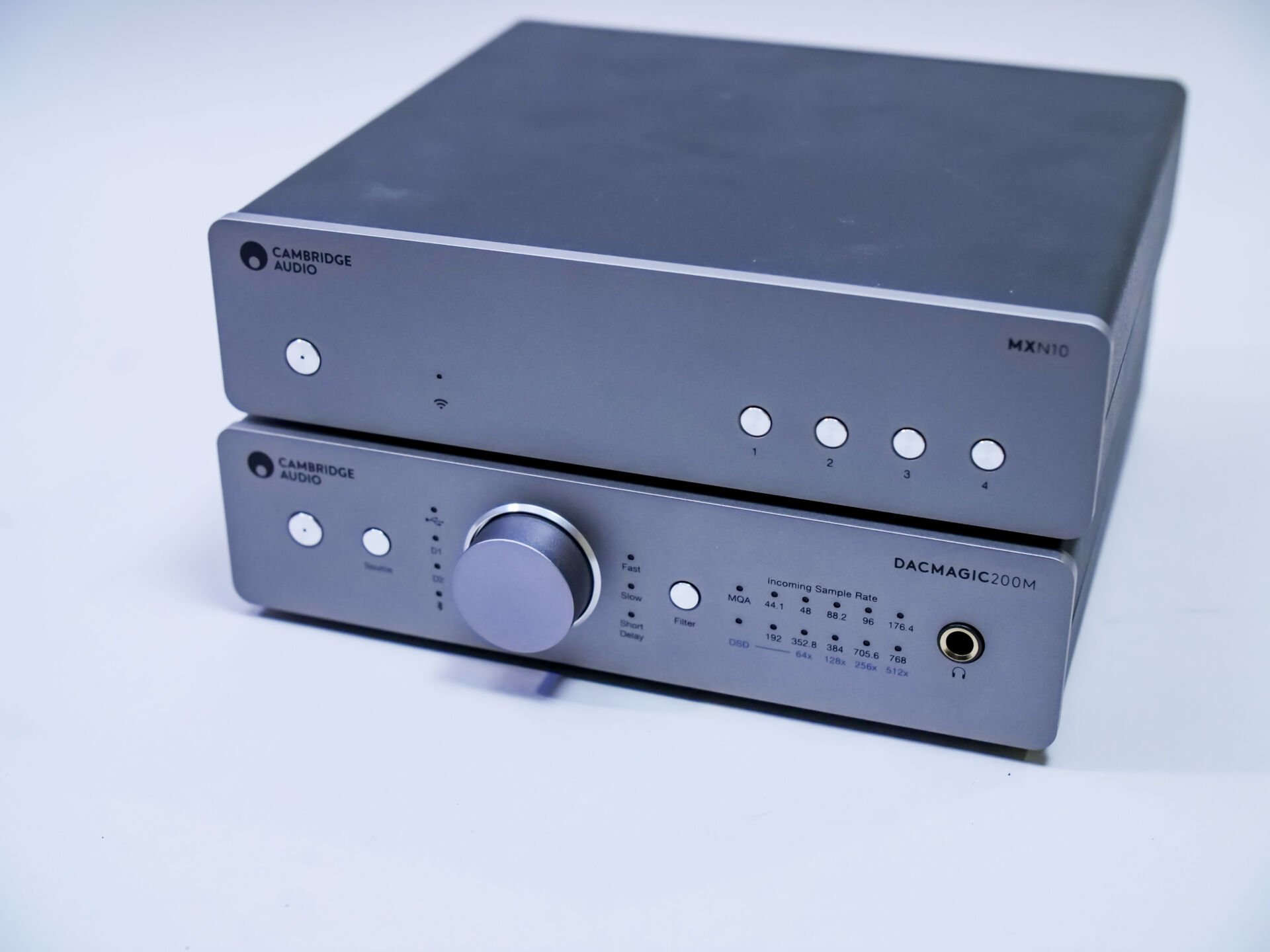

Intro
Contents
Small but nice… it’s a well-known saying. However, this is not always the case in audio. A very small speaker can often not present a solid foundation. And a very small amplifier… You know what I mean. With computers, a reduction does not have to be at the expense of computing power. In fact: smaller transistors make it possible to calculate more with less energy because more of them fit on one… What about the Baby Ambre from Metrum Acoustics? Does this baby streamer make a ‘dent in a packet of butter’, as we Duch say?
As you’ve already seen in the video, the Baby Ambre is rightly a Baby… it’s really a little box… just like the Flint. And this Baby Ambre also complements that. Later on, a headphone amplifier will have to be added to complete the stack.

The heart of the Baby Ambre is a Rasberry Pi on a kind of so-dimm card. Officially it is called Compute Module 3. The board is equipped with an ARM A53 processor (Cortex A8 architecture). The CPU taps at 1.2 GHz and has 4 cores. These have 1GB of RAM to temporarily store things. The software – Roon Client software – is put on a micro SD card.
We look both optical and coaxial on the back. Controlled by a WM8804G. The I2S capability of the transceiver is not used in the Baby Ambre. Two clocks have been placed: One for 44.1 and one for 48 kHz and multiples thereof. Next to spdif we will of course find an ethernet connection to connect the streamer to the network. Wifi is not an option, just like with the regular Ambre.
What’s clever is that Metrum has managed to keep the food internal. No external blocks to get rid of. But also no possibility to possibly upgrade the food.
All in all you get a complete package for 499 euros.







